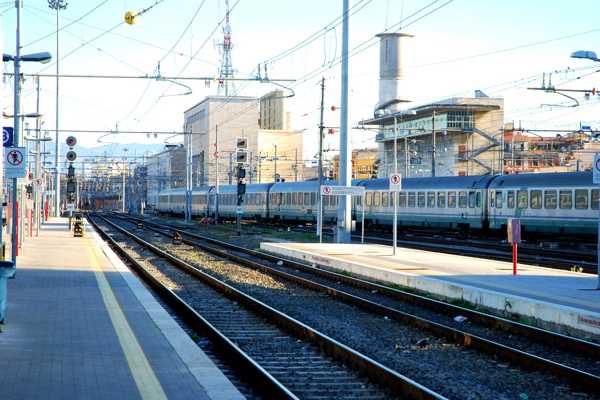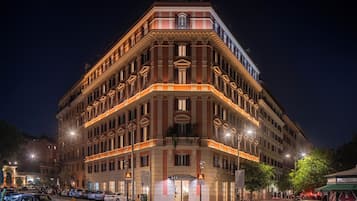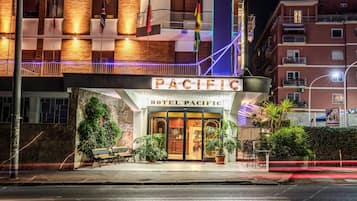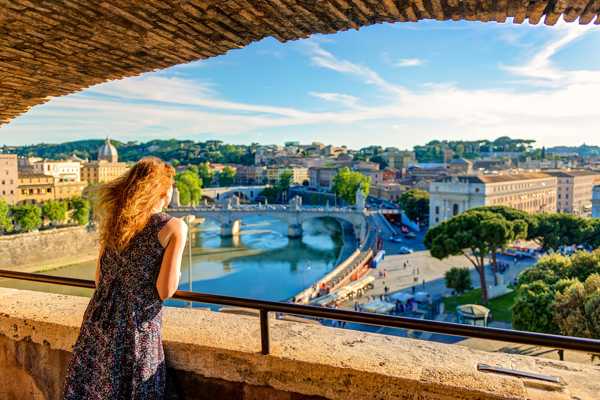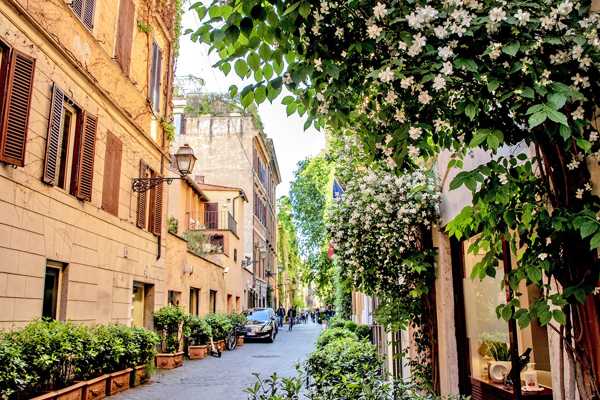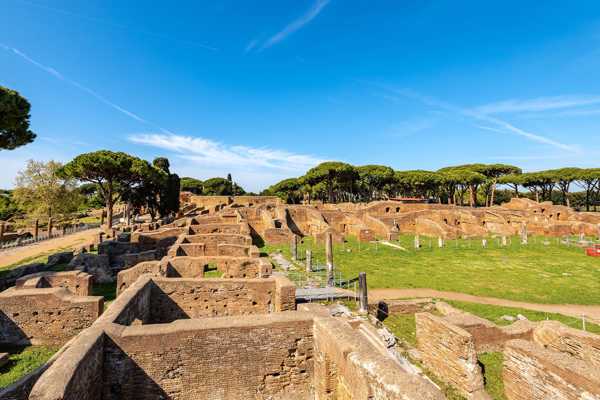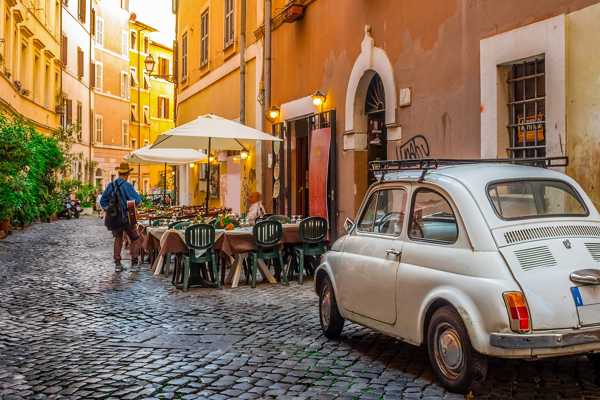The best local dishes from Rome are as much a vital part of the city's culture as its stunning architecture and ancient history. With its old family recipes, independent restaurants and a foodie culture that has thrived for centuries, Rome is one of the world's great gourmet destinations.
No matter what you eat, you can be sure that it'll be freshly made with natural, local ingredients. Pasta and pizza are classic choices, but Roman cuisine also understands the satisfaction of crispy roast meat and the appeal of a rich stew. This is food to be eaten slowly and savoured, preferably with a few glasses of good wine. Eat your way through this tasty city with our guide to the best food in Rome.
- 1
Pizza al taglio
An Italian classic with a Roman twist

- Essen
Rome and Naples have a long history of rivalry, which extends to their very different takes on pizza. Roman-style pizza uses a thicker dough compared to the thin Neapolitan pizza, and oil is added to make the pizza base crispy. Pizza al taglio is baked in enormous trays and sold by the slice, making it an excellent snack or quick lunch option.
Italians like to keep the toppings simple, often nothing more than fresh tomato sauce and mozzarella. Other popular toppings include romana (anchovies and oregano) and capricciosa (mushrooms, artichokes, ham and olives). Try a few juicy chunks of fig on top of your pizza al taglio, a seasonal speciality served during August and September.
- 2
Saltimbocca
Its name translates as ‘jump in the mouth’

- Essen
Saltimbocca is a traditional Roman dish that is said to be centuries old, though it doesn't appear in cookbooks until the 1800s. It's made with thin veal cutlets, pan-fried and rolled with slices of prosciutto and fresh sage leaves, then skewered with a toothpick and sautéed in butter and dry white wine. The result is a succulent, flavourful dish that makes a popular main course.
Traditionally, saltimbocca is served with gnocchi, though pasta, polenta, and potatoes are common sides to this dish. Regional variations have made their way back to Rome, so you'll also find it made with pancetta instead of prosciutto, chicken instead of veal, or brandy instead of white wine.
- 3
Jewish fried artichokes
A beautiful dish that resembles a flower

- Essen
Jewish fried artichokes originated in Rome's historic Jewish area. No one knows how old the recipe is, but this comforting vegetable dish has appeared in books since the 16th century. Most places use Romanesco, a local variety of artichokes that's in season between February and April.
The best time to eat fried artichokes is in the spring. Artichokes are seasoned with salt, pepper, and lemon juice, then deep-fried in olive oil until crispy. Many places also serve carciofi alla romana, a variation that stuffs the artichokes with parsley and garlic.
- 4
Coda alla vaccinara
A popular stew derived from Rome's 'peasant cuisine'

- Essen
Coda alla vaccinara is a uniquely Roman take on oxtail stew. It started as a way to use cheaper and less popular cuts of meat, especially the tail. The meat or offal is cut into small pieces and slowly stewed with celery, carrots, tomato purée, and wine. Small bits of prosciutto or pancetta are often added for flavour, along with thyme, bay leaves, nutmeg, or cinnamon.
The taste is a combination of savoury and sweet, which comes from the inclusion of raisins, candied peel or a tiny bit of dark chocolate. It should be served with a heaping dose of polenta. For the most authentic experience, skip the fancy restaurants and eat coda alla vaccinara in a casual trattoria.
- 5
Porchetta
Succulent roast meat sold at delis and sandwich joints

- Essen
Rome's beloved traditional pork roast, porchetta is beautifully tender thanks to the 8-hour-long cooking time. The meat is stuffed with liver, garlic, rosemary, fennel, and other herbs before being roasted over a wood fire. Historically, that meant roasting a whole pig, though today’s ideal cuts of meat are pork loin and pork belly.
The slow cooking produces meat that's dark and crispy on the outside, but soft and juicy on the inside. Porchetta is often served as a main dish at family dinners or special occasions, but in Rome, you can enjoy it as a snack. Get it on a slice of pizza bianca as a classic Italian street food.
- 6
Spaghetti carbonara
Creamy pasta with cured pork

- Essen
Spaghetti carbonara is a perennial favourite of Roman cooking, though its origins are somewhat murky. Some say it was first made by Italian charcoal workers, since the name came from the word carbonaro (charcoal burner) Others believe it was invented after World War II, making use of the supplies of bacon and powdered eggs distributed by the Allies.
Spaghetti carbonara has only 4 ingredients – spaghetti, egg yolks, cured pork, and Pecorino Romano. The light, creamy sauce is made by mixing egg yolks and cheese with a bit of pasta water. The dish is best eaten immediately, so dig in as soon as it arrives at your table.
- 7
Supplì
Kick off your meal with these tasty antipasti

- Essen
Supplì (deep-fried balls of rice) is a traditional street snack or appetiser in Rome. The rice is cooked with tomato sauce and small chunks of sausage, then allowed to cool and shaped into balls. The mix is then covered in egg and breadcrumbs before being fried in oil until crispy.
Break a supplì in half and you’ll have melted mozzarella oozing out, stretching into a string of cheese. As it looks like a telephone cord, the snack is nicknamed supplì al telefono. Today, many chefs in Rome have come up with new flavours for supplì, including chili pepper, anchovies, and smoked cheese.
- 8
Semolina gnocchi
Slow-baked Italian comfort food

- Essen
Thursday is gnocchi day in Rome, thanks to a tradition going back hundreds of years. Since Catholics fasted or abstained from meat on Fridays, a high-calorie meal like gnocchi was served on Thursday in preparation for the fast. Gnocchi dough is most often made from potatoes or wheat flour, but the Roman version, gnocchi alla Romana, uses semolina for its starchy base.
The semolina is cooked in milk before eggs and butter are added to the mix. Unlike gnocchi elsewhere in Italy, it's baked or grilled in the oven, with a heavy helping of parmesan cheese on top. The discs of semolina melt slightly in the oven to produce a gooey, buttery dish with a crispy topping.
- 9
Cacio e pepe
The descriptive name simply means 'cheese and pepper'

- Essen
Cacio e pepe is an old Italian dish that uses the classic flavour combination of cheese and black pepper. The ingredients are mixed with some pasta water and a drop of olive oil, then beaten vigorously to make a sauce. Like many Italian classics, the recipe has been handed down through generations.
The true Roman version of the recipe uses Pecorino Romano – a local aged cheese that has a sharp, salty taste. The ingredients are easy to carry and store, which is probably why this dish was favoured by shepherds. Tonnarelli is the pasta of choice for cacio e pepe, though spaghetti is quite commonly used as well.
- 10
Filetti di baccalà
A delicious deep-fried fish snack

- Essen
Filetti di baccalà, or battered cod fritter, is a popular street snack in Rome. The cod is packed with salt for several days, then soaked in milk or water. It's dipped in a thick batter flavoured with garlic and parsley, then deep-fried until crispy and golden.
You can find filetti di baccalà at street stands and hole-in-the-wall eateries throughout Rome. It's also served as an appetiser, often accompanied with bread, butter and a leafy salad. Dar Filettaro is a cafeteria in the Centro Storico that serves nothing but filetti di baccalà.

